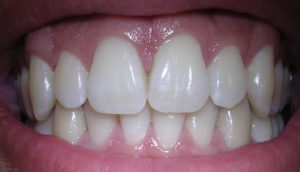 Many of us grew up having silver colored dental fillings (called dental amalgam) in our teeth. Dental amalgam has been used for over 150 years for the treatment of dental cavities (caries) because it is durable, easy to use, and affordable. But it is composed of about 50% elemental mercury (Hg) and so it may release a certain amount of mercury both during the time the cavity is filled and afterward with normal wear. Mercury can cause adverse health effects, such as effects on the central nervous system, kidneys, and immune system. Human mercury exposure also occurs through the consumption of mercury (MeHg) contaminated seafood.
Many of us grew up having silver colored dental fillings (called dental amalgam) in our teeth. Dental amalgam has been used for over 150 years for the treatment of dental cavities (caries) because it is durable, easy to use, and affordable. But it is composed of about 50% elemental mercury (Hg) and so it may release a certain amount of mercury both during the time the cavity is filled and afterward with normal wear. Mercury can cause adverse health effects, such as effects on the central nervous system, kidneys, and immune system. Human mercury exposure also occurs through the consumption of mercury (MeHg) contaminated seafood.
Recently many dentists switched to the use of the composite resins, which are mercury-free alternative materials. However, these can release can release small quantities of bisphenol A (BPA) when applied and as they degrade in the mouth. BPA is an endocrine disruptor, has been found to cause various adverse health effects, including reproductive effects, and can be measured in urine. Which raised the question, do persons with composite resin fillings have elevated BPA in their bodies?
This study examined 14,703 subjects who were divided into three groups based on the number of dental surface restorations (DSR): 0, 1–8, or greater than 8. Dental surface restorations applies to fillings, and not crowns. Note that a tooth's surface can have 5 surfaces (in molars and pre-molars), so 8 filled surfaces can be fewer than 8 teeth with fillings. (It's not the number of fillings, but the surface area they occupy - so the Science Daily article title is misleading.)
They found that the more dental surface restorations a person has, the higher the levels of mercury in the blood. But they found no association between dental surface restorations and urinary BPA. These results are reassuring for those with fillings made of composite resins, but not for people with fillings of dental amalgam. Note: DSR are Dental Surface Restorations, THg is blood total mercury, IHG is inorganic mercury, and MeHg is methyl mercury (typically from seafood). From Science Daily:
Have more than eight dental fillings? It could increase the mercury levels in your blood
Dental surface restorations composed of dental amalgam, a mixture of mercury, silver, tin and other metals, significantly contribute to prolonged mercury levels in the body, according to new research from the University of Georgia's department of environmental health science in the College of Public Health.This research, which analyzed data from nearly 15,000 individuals, is the first to demonstrate a relationship between dental fillings and mercury exposure in a nationally representative population. ...continue reading "Dental Fillings and Mercury Levels"
